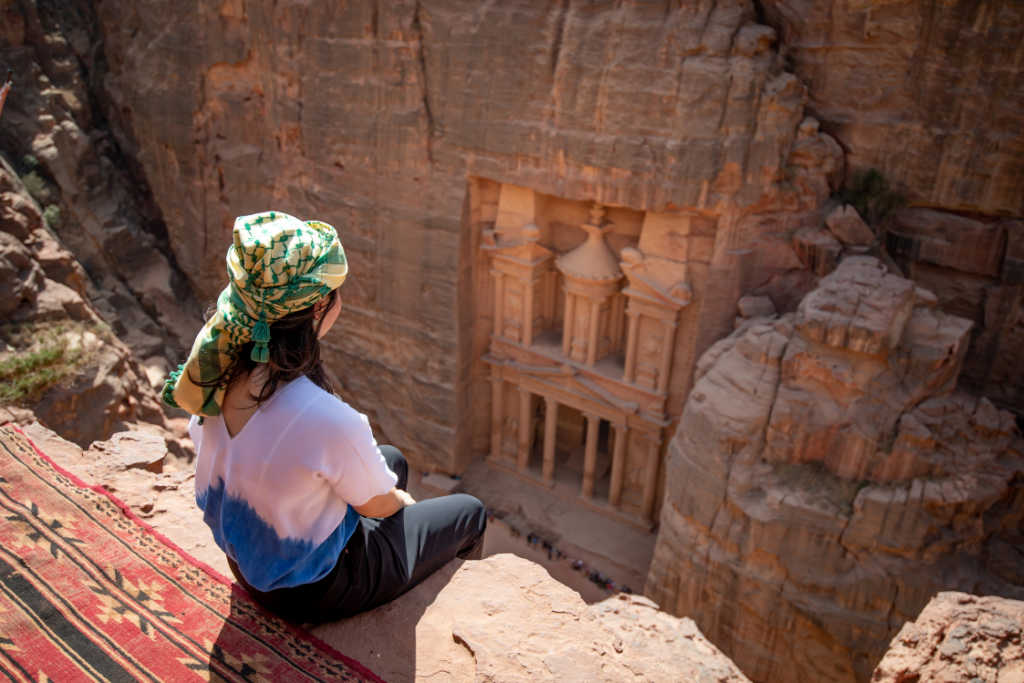The New 7 Wonders of the World campaign began in 2000. After evaluating over two hundred monuments, the campaign chose seven new world wonders. These include the Taj Mahal, the Great Pyramid of Giza, the Lighthouse of Alexandria, and the Great Wall of China. Each of these monuments has a unique beauty that makes them world-class attractions.

Great Wall of China
The Great Wall of China is a monumental structure in China. The walls have been in place for centuries, stretching almost 9,000 kilometers. The walls were constructed in a number of different materials and began as early as the 3rd century BCE. However, the wall really began to flourish during the Ming Dynasty (1368-1644 CE), when the rulers of China built fortified structures that spanned much of the continent. The current wall is mostly a remnant of this time period.

The Great Wall of China is the largest manmade structure in the world. It stretches for over 6,700 kilometers, mostly along the crests of mountains and hills. It stands as a testament to Chinese culture and civilization and is listed as a UNESCO World Heritage Site.
Taj Mahal
One of the world’s greatest monuments, the Taj Mahal is an architectural masterpiece and is one of the seven wonders of the world. It was built by the Mughal emperor Shah Jahan in memory of his beloved wife. The ivory-white marble structure has exquisite gemstone decor. It is situated on the banks of the River Yamuna. It is surrounded by beautiful gardens and a longitudinal fountain. Also known as the ‘wonder in the moonlight’, the Taj Mahal attracts up to 8 million visitors annually.

The Taj Mahal is so amazing that it is hard to believe the monument is so old. In fact, you can’t even see the joint between the marble slabs. You have to view the 9-minute video to understand the beauty of this monument.
Great Pyramid of Giza
The Great Pyramid of Giza is the most famous structure in history and one of the 7 Wonders of the World. Its height was unsurpassed for thousands of years and continues to amaze people today. Its construction and precise orientation are mind-blowing. Though many theories suggest an extraterrestrial origin, the most common explanation is that it was built by Egyptians. The Great Pyramid of Giza was the culmination of a royal mortuary complex.

The structure has a subterranean chamber, also called the Pit, that is 27 m deep. It measures 16 cubits north-south and 27 cubits east-west and is about 4 m high. The western half of the Pit is still incomplete. Its four sides are almost perfectly aligned with the cardinal points of the compass. Moreover, the Descending Passage is the eastern part of the north wall.
Lighthouse of Alexandria
The Lighthouse of Alexandria was built to guide ships into Alexandria harbor. It used a reflective mirror during the day and fire to illuminate the darkness at night. It was so effective that it could be seen up to 100 miles away. The construction of the Lighthouse of Alexandria began during the reign of Ptolemy I Soter in the 3rd century BCE. It was completed during the reign of Ptolemy II Philadelphus.

The Lighthouse of Alexandria is an ancient engineering marvel. It was built in the third century BCE on an island near Alexandria. As the city became more prosperous, it became a trading port for merchants and sailors from all over the Greek world. The city also developed into a hub of learning. While the lighthouse was originally built as a way to guide ships, it ultimately became a symbol of the city.
Colosseum
The Colosseum, one of the Seven Wonders of the Ancient World, has a long and interesting history. It was built to host gladiatorial battles and other public events. These events often included a strong religious component. They were also used as a demonstration of family prestige and power. In addition, the Romans often hosted animal hunts, which used a variety of wild beasts imported from Africa and the Middle East. The battles and hunts were staged amid elaborate sets incorporating trees and buildings.

The Colosseum was a huge arena that measured 76 by 44 meters. The structure was enclosed by a four-meter-high wall. The seats closest to the arena were reserved for magistrates, senators, and important people. The emperor even had his own private entrance.




